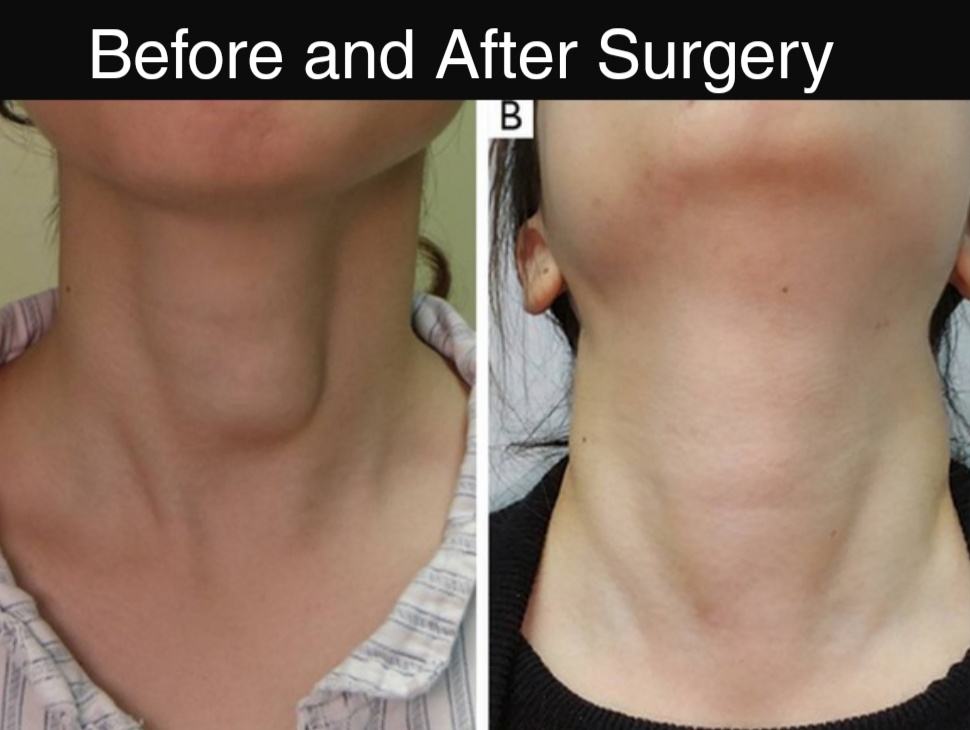Trans-Oral Endoscopic Thyoid Surgery

ENDOSCOPIC SCAR LESS THYROID SURGERY

BEFORE AND AFTER SURGERY
Thyroid lumps affect about 7 per cent of the population. Women are four times more likely than men to be affected. As a significant number of young women are diagnosed with thyroid lumps, patients are often anxious about development of scar (mark) after surgery. But this scar-free procedure, known as Trans-oral Endoscopic Thyroid Surgery, has the smallest areas of dissection and is the least invasive procedure among the existing types of Minimal invasive thyroid surgery techniques.
Since the nineteenth century, the standard open cervical thyroidectomy technique has been significantly improved in order to reduce morbidity and mortality rates. In the present day, the surgical technique now focuses on minimizing visible scarring by moving the incision to a hidden area. Various minimal access thyroidectomy techniques for endoscopic and robotic thyroidectomy have been invented and developed for over two decades because of their enhanced cosmetic results compared to open surgery. However, with those techniques, the scars are still seen at the incision area. A benefit of this innovative thyroid technique is its excellent cosmetic outcome due to scarless surgery.
Instead of operating through the neck, chest or armpit as in other types of thyroid surgery, the surgeon operates through the patient’s oral cavity, which conceals any wound.
Cosmesis today plays a pivotal role in choosing the type of surgery a patient undergoes.
It has pushed surgeons to think beyond the limitations of conventional surgery. Trans-Oral thyroid Surgery is a truly Endoscopic approach. It combines the benefits of the minimal access approach, instrumentation, magnification and precision.
This method takes advantage of natural avascular tissue planes to approach the thyroid gland.
Access is through the oral cavity and gland is also delivered out the same way.
As the skin is not incised at any time in this method, hence formation of scar is out of question.
Also physical or physiological complication related to scar, such as keloid, hypertrophic scar, contracture formation, dehiscence can be easily avoided with this approach.
The entire procedure takes about two hours. Patients who undergo this procedure typically stay in the hospital for two to three days. Blood loss is minimal and recovery is faster.
We need to ensure preservation of the key nerves responsible for voice production, and the parathyroid glands responsible for calcium metabolism in the body. With this new technique, we can achieve these vital results, enhance the overall outcome, and ensure the best cosmetic outcome for patient.
- says : Dr Anirudha Patil – Laproscopic General Surgeon
